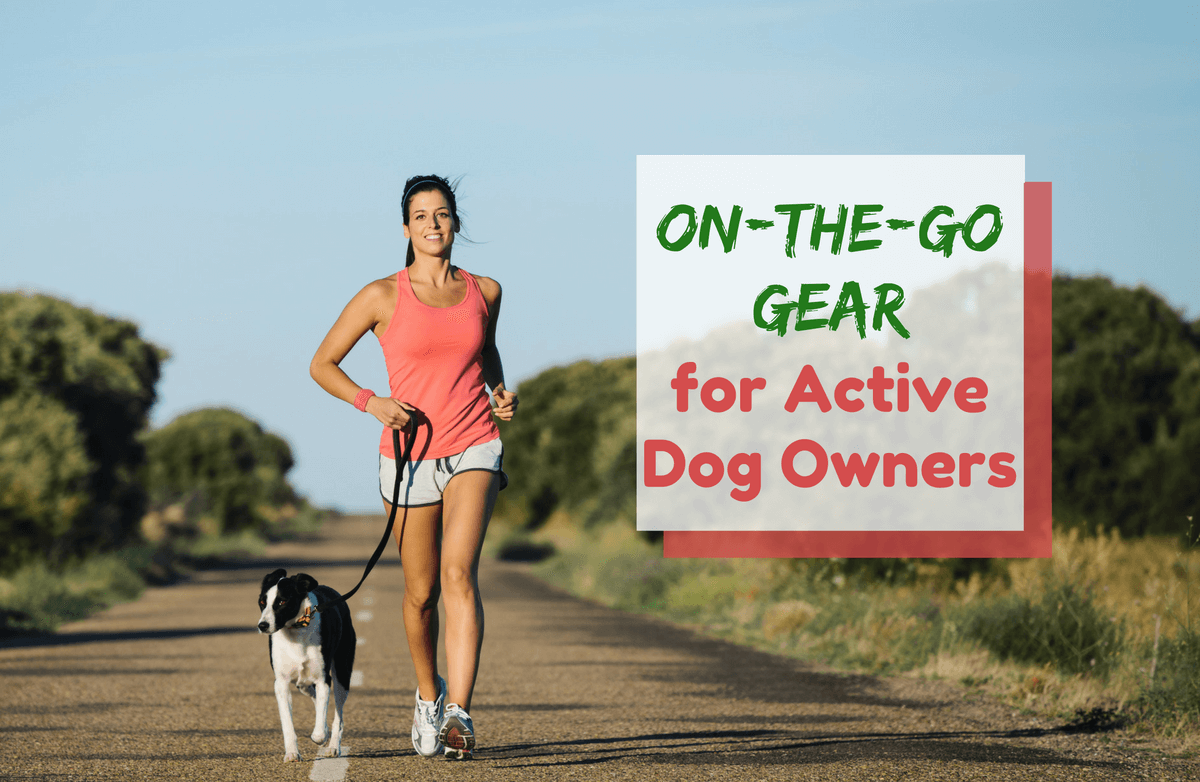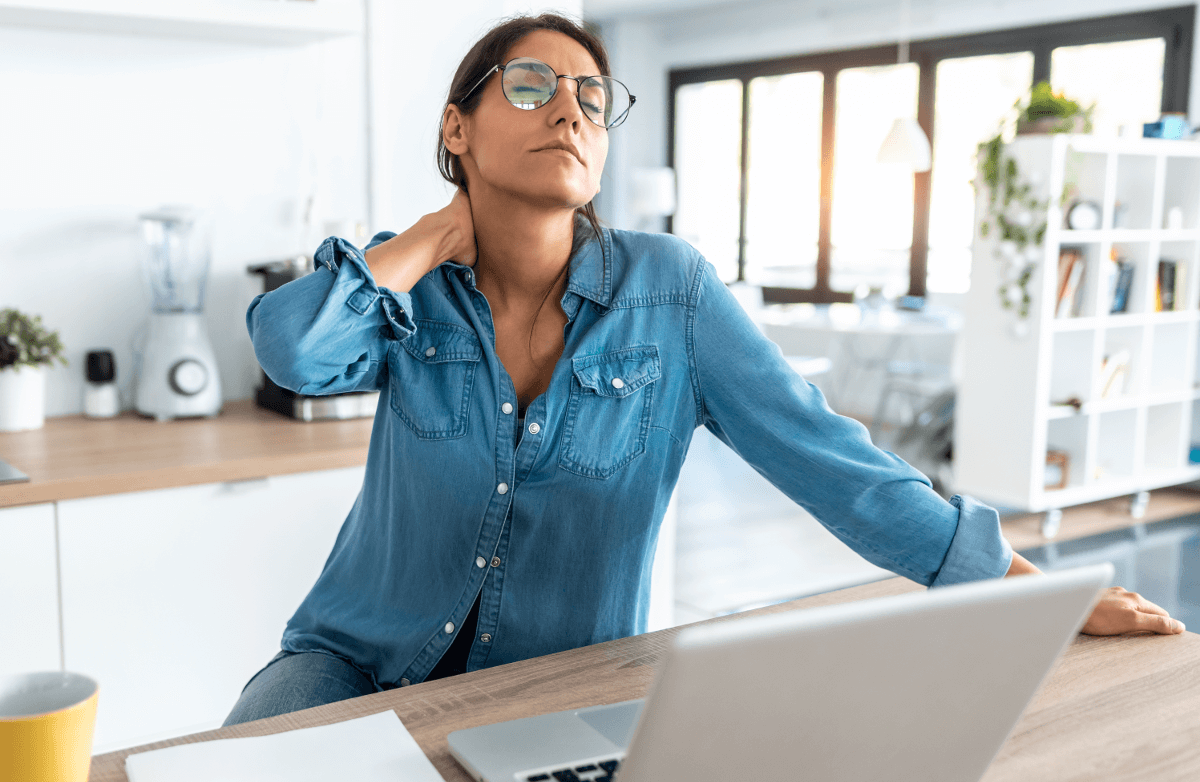|
Athletes have careers that ride on every performance, game or competition. The majority of these athletes spend their entire lives training for their moment—sacrificing time with family and friends in order to make it to the top, skipping vacations for days in the gym, spending the off season training and perfecting skills in order to be better for when the next season comes around. The elite athlete mindset is focused on being the best. When the difference between gold and silver can be just a fraction of a second, a fierce dedication and attention to detail can give them the advantage. No matter if you are an avid athlete or a weekend warrior, though, we have that desire to perform at our best in common. It is human nature to want to excel, and it is motivation, determination and the details that gets us to the finish line. This workout has been used by accomplished athletes to help them create balance and strength in various muscle groups, leading to improved overall performance and injury prevention. The bodyweight workout can be repeated two to three times through as part of your daily workout, as a warmup before you hit the gym, track or road, or as an active recovery routine. Exercises stem from multiple modalities, all of which are designed to help stabilize the core, mobilize your body and improve posture and alignment. Creating balance and strength in every muscle group ensure not only helps you perform better, but it could also help prevent future injuries. Take care to connect breath to movement throughout this workout to optimize athletic performance. Today, get inspired to challenge yourself, train and set life goals like the elite athlete. 1. Marching Bridge and Balance Challenge Not only is this move great for stretching and opening up the front of the hips, but you'll also be working to strengthen your glutes. The single-leg balance will also work the deep stabilizers of the core, including the transverse abdominis and the multifidus in the spine. A strong core will help prevent injuries and will ultimately help improve overall performance. 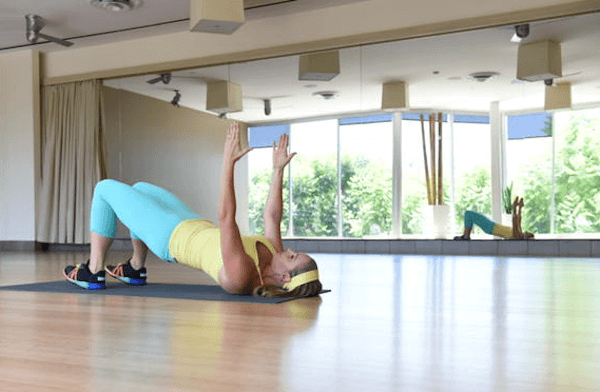  The Exercise: Start on your back with your feet hip distance apart. Raise your arms straight above the chest, with your palms facing each other. As you inhale, press your hips up towards the ceiling. Exhale and bring your right leg to a table-top position, keeping the hips level and your left foot pushing into the ground. Lower the right leg to the start position as you inhale. Repeat on the left side to complete one rep. Perform six to 10 reps on each side. Modification: Place your hands along the sides of your body, rather than raised high, to help with balance. This movement could also be done by simply lifting and lowering the hips to activate the gluteal muscles. 2. Dead Bug Alternate Arms and Legs This is a great move to help develop the core strength. By alternating arms and legs, you challenge your stabilization and really focus on control in the core.   To Set Up: Lay with your feet on the floor and the back of the rib cage touching the mat, then gently roll the hip bones up toward the ribs. Keeping stable in the pelvis and low back, bring your legs into a table top position and gently move your shoulders downward and away from the ears. Feel the muscles under the arms engage, and float the arms up with the palms facing each other. The Exercise: Lying stable in the start position, reach your right arm and left leg away from center while maintaining a strong core. Inhale and bring the leg and arm back to start. Exhale and do the same with the opposite arm and opposite leg. Be sure to keep the back of the ribs on the mat for the duration of this movement. Repeat six to 10 times. Modifications: To slowly work towards the full exercise, try holding the start position for a set amount of time. Begin with 10 seconds, then work your way up. As you gain strength in the core over time, try extending one leg at a time with the arms by your sides before advancing to the full movement. 3. Plank with Rotation Planks are sure to get your core muscles firing, and adding a rotation will also help develop strength for the shoulder stabilizers and upper-back muscles. 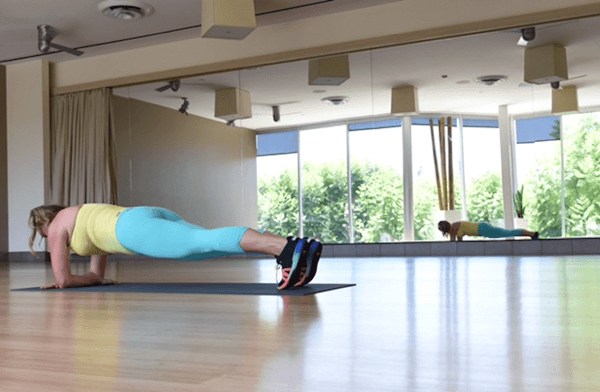 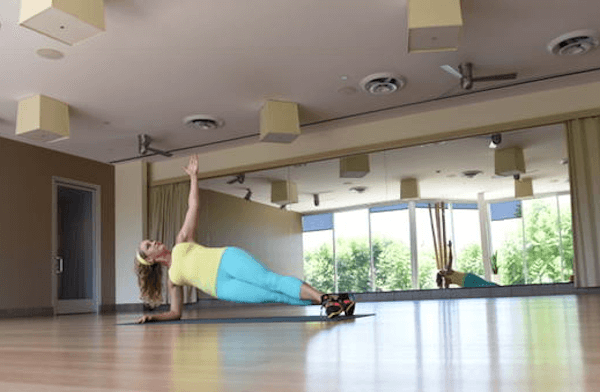 To Set Up: Start on your knees and forearms. Place your left forearm slightly in front of your right forearm in a horizontal position in line with the top of the mat. The Exercise: Engage your abdominals as you inhale and draw your shoulders down and away from the ears. Exhale while pressing down into your right forearm as you rotate into a side plank, reaching your left arm up to the side and engaging your side waistline. Slowly return back to the starting position and perform six to 10 times on the right side. Then, do the same number of reps on the left side. Modification: Keep your knees on the mat and your bottom knee on the ground during the rotation. 4. Walk Out Plank This dynamic move is a full-body, head-to-toe exercise with an emphasis on trunk stability. 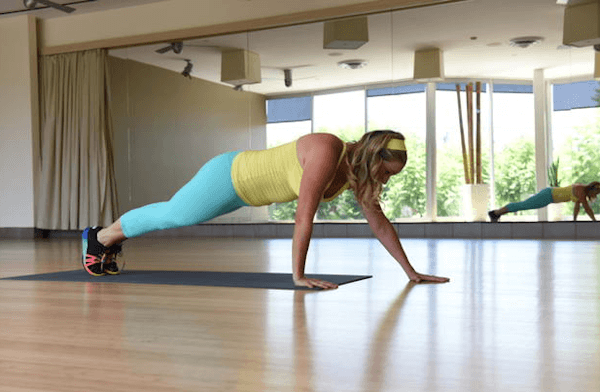 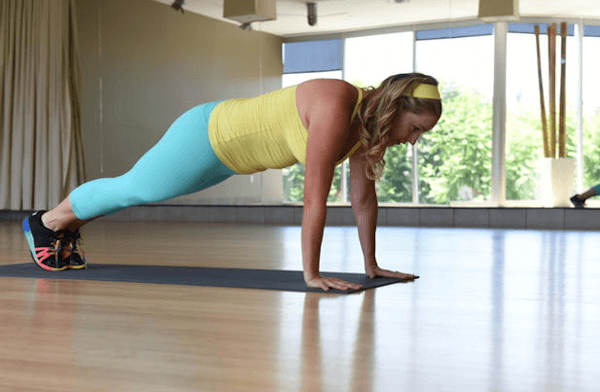 Set Up: Come to a plank position with the hands directly underneath the shoulders. Draw the shoulders down and away from the ears. Brace through the midsection by gently drawing the hip bones up toward the ribs. The Exercise: As you exhale, move your right hand forward six to 12 inches, depending on the flexibility of your shoulder and your overall stability. Then, bring the left hand forward to meet the right. Inhale as you bring the left back to center, then the right. Then, switch, with the left hand coming forward first, followed by the right and back to center. Repeat 10 to 12 reps, switching the hand that moves forward first each time. Modification: Place your knees on the mat until you gain the strength to execute the exercise from the full plank position. As you progress, consider doing a few repetitions from the full position and then finishing out the set in the modified position. 5. Hinge Back Paddle This move incorporates core work through rotation, while improving mobility through three dimensions of movement. 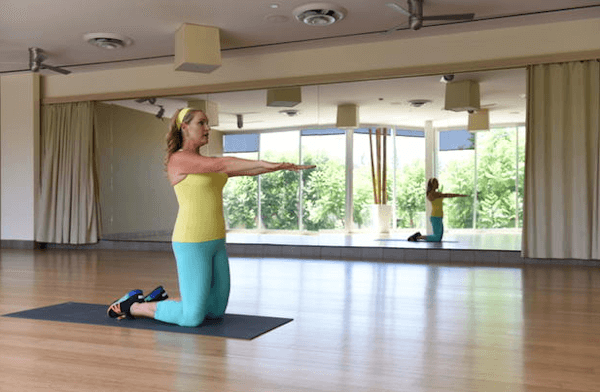   Set Up: Kneel on the mat with your legs hip distance apart. Place the arms straight out in front of you. The Exercise: Engage the abdominals and gluteal muscles as you inhale and hinge back from the hips. Only go as far as you feel comfortable or as far as you can while maintaining a strong core connection and flat back. Exhale and bring the arms down to the left, circle them up and around, then press the arms downward as you return to the start position. Complete the movement again on the right side. Perform the full movement six to 10 times on each side. Modification: Decrease the range of motion, both with the hinge back and arm movements. Build up your core strength by just practicing the hinge back until you feel comfortable to add the arm movements. 6. Reverse Lunge into Extension Lunges are a great way to strengthen both the gluteal muscles and the legs overall. The added extension helps to improve posture alignments and balance in the body. 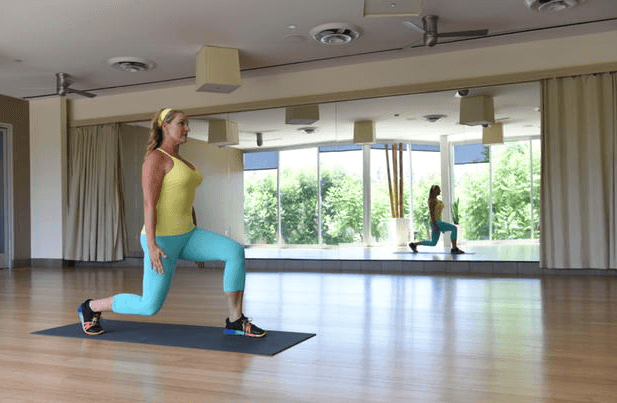 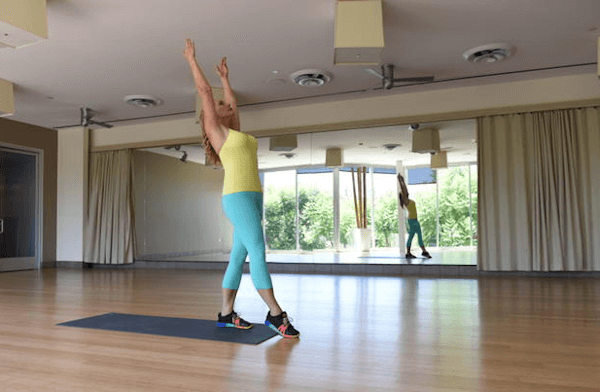 Set Up: Begin standing upright with your feet hip distance apart and your arms hanging long down by your side. Practice your best posture in the start position. The Exercise: Step the right leg back into your lunge, keeping the front knee directly on top of the ankle without ever allowing it to move ahead of your foot—you should be able to see your toes. Inhale as you step the right leg in and flexing the foot as you extend your arms upward and lift through the check. Think about opening the chest by lifting your sternum gently, without overarching the lower back. Repeat with the left leg back, completing a total of 10 to 12 reps total. Modification: Decrease the range of motion both in the lunge position and extension portion of the exercise. 7. Bear Pose with Arm Reaches This move will improve your overall core strength, including the upper back.  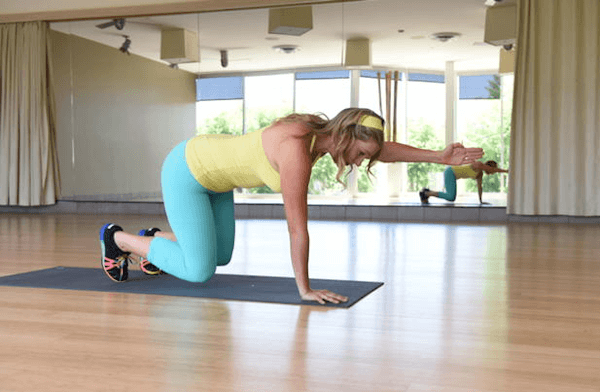 Set Up: Get on all fours, with your hands directly under the shoulders and the knees under the hips. The Exercise: Inhale and press into all 10 fingers and the root of the palm. Feel the muscles under the arms activate as you lift the knees up off the floor and open the knees ever so slightly. You should feel your deep transverse abdominals working. For an added challenge, maintain the stability and core engagement as you exhale and reach the right arm out. Inhale to bring the right arm back to start, then exhale to reach with the left arm before bringing it, too, back to center. Complete six to 10 reaches, then lower your knees. Modifications: Keep both hands on the floor and see how long you're able to stay in a position with your knees hovering above the floor. 8. Swimming This is a full-body move that specifically benefits the posterior chain of the body. The exercise brings balance and stability to the body, which, in turn, helps to improve posture.  Set Up: Lie on your stomach with your legs hip distance apart and your arms shoulder distance apart reaching above your head. As you reach upward with the arms, continue to draw downward through the shoulder to avoid tension in the neck muscles. The Exercise: Inhale and reach out, lifting the arms and legs off the floor. Exhale, lifiting the right leg and left arm higher. Be careful to keep the pelvis stable throughout this movement. Inhale, exhale and then switch to raise the left leg and right arm higher. Modification: Rather than keeping arms and legs raised throughout the motion, start by leaving one arm and the opposite leg on the floor as the other limbs move. 9. Low Lunge with Rotation Often referred to as the "World's Greatest Stretch," this exercise allows you to stretch the front of the hip and back of the leg while releasing compression in the spine. It also provides a nice stretch for the shoulder and chest area.  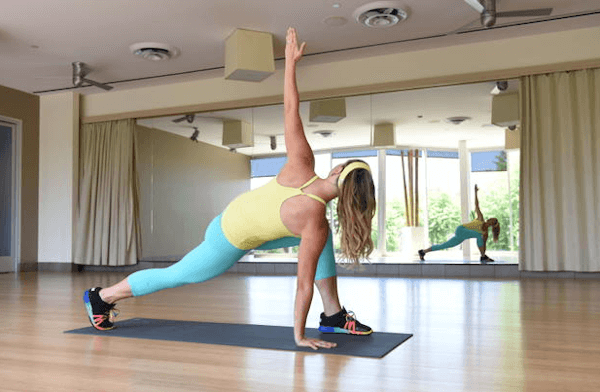 Set Up: Start in a plank position and step your right foot forward in between your hands. The Exercise: Draw your right hip down, pacing your left hand to the floor and rotating your torso as you reach your right hand towards the ceiling. Inhale and continue to lengthen through the left leg and out through the crown of the head. Exhale, creating length in the body as you continue to rotate more. Step back to the plank position and repeat on the other side. Complete six to 10 times total. Modification: Stay in a lunge without adding the rotation. 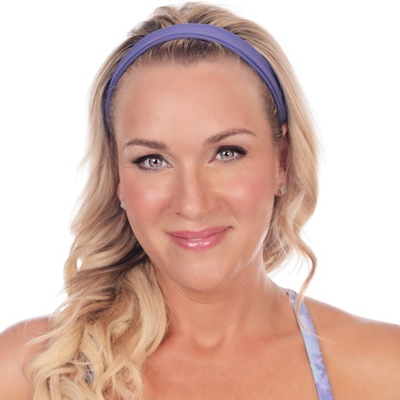 About the Author Patricia Friberg is the creator of the award-winning "Belly Beautiful" workout series, "Bottom Line & A Core Defined," and "Power 4 Pink" workout DVDs. She has been motivating students in her private and group fitness classes for over 20 years, teaching a variety of formats, including Pilates, Spinning, kickboxing, step, BOSU, body pump, circuit, outdoor boot camp, Barre and yoga. Patricia is fully certified by Stott Pilates and holds certifications in GYROTONIC, GYROKINESIS, yoga, Barre, Schwinn Cycling, as well as the American Council on Exercise. She is the head of Group Fitness at Equinox, Westlake, California and she trains professional athletes including players in the NBA and NFL at Proactive Sports Performance in Thousand Oaks, California. Patricia is a licensed mental health counselor with a Master’s degree from Pratt Institute. Currently she lives in Southern California with her husband and two boys. About the Author Patricia Friberg is the creator of the award-winning "Belly Beautiful" workout series, "Bottom Line & A Core Defined," and "Power 4 Pink" workout DVDs. She has been motivating students in her private and group fitness classes for over 20 years, teaching a variety of formats, including Pilates, Spinning, kickboxing, step, BOSU, body pump, circuit, outdoor boot camp, Barre and yoga. Patricia is fully certified by Stott Pilates and holds certifications in GYROTONIC, GYROKINESIS, yoga, Barre, Schwinn Cycling, as well as the American Council on Exercise. She is the head of Group Fitness at Equinox, Westlake, California and she trains professional athletes including players in the NBA and NFL at Proactive Sports Performance in Thousand Oaks, California. Patricia is a licensed mental health counselor with a Master’s degree from Pratt Institute. Currently she lives in Southern California with her husband and two boys. |
Popular Entries
Related EntriesMore From SparkPeople
|

.jpg)



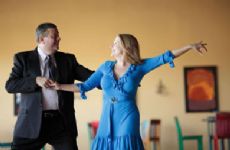
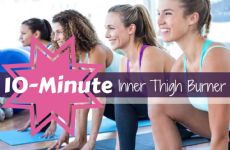


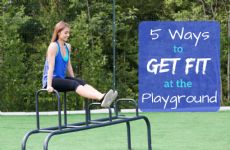
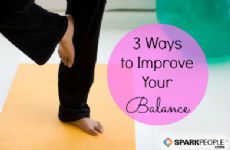
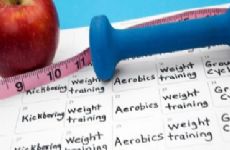





.jpg)
